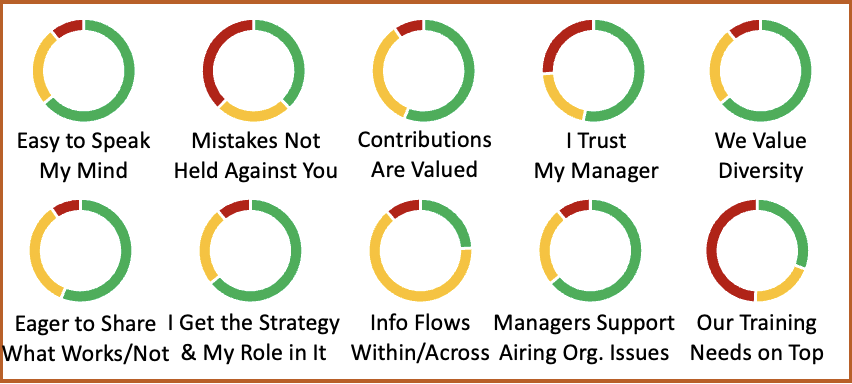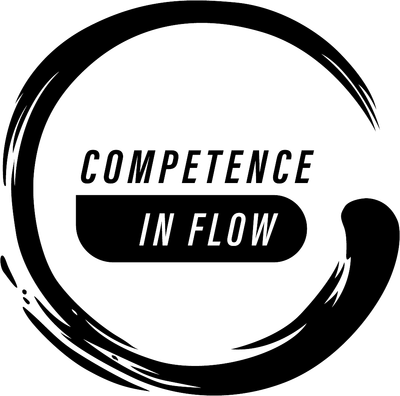Introducing the Culture Health Discovery

As a leader, how do you find out about the health of the culture in your organisation? Do you see staff telling truth to power? Do you know what’s going on in cross-functional teams? In customer-facing teams, in remote offices?
The value of culture was quantified by Kotter and Heskett in a study that found over 11 years a 7X increase in sales for companies with a healthy culture versus 1.7X only for companies with less healthy cultures [1]. Microsoft CEO Satya Nadella makes culture as his top priority: “The CEO is the curator or an organization’s culture. Anything is possible for a company when its culture is about listening, learning, and harnessing individual passions and talents to the company’s mission. Creating that kind of culture is my chief job as CEO.” [2]
To help organizations efficiently delve into their culture, we, at Competence in Flow, are introducing the Culture Health Discovery. The process is grounded in two of the main pillars that social scientists have identified as necessary for high performance teams and organisations across sectors, namely psychological safety [3], and the growth mindset [4].
Psychological safety in a team means that members believe it is safe to take interpersonal risks, such as speaking what’s on your mind, admitting errors and disagree. It is key for organizational learning [4]. A Pew Research Center survey found that 89% of employees think it’s essential [5], yet, only few business leaders often demonstrate the behaviors that can instill it in their team [6].
The second pillar, the growth mindset, relates to employees’ belief that their talents can be developed, so they invest less energy into looking smart, and more into learning. At an organizational level, this translates into more trust between colleagues, support for risk-taking and innovation [4].
The Discovery starts with the Culture Health Card, which charts answers to a 10-question, anonymous survey. Questions such as “it is easy to speak up about what is on your mind”, with choice low, medium or high. Simple, quick, precise.
The card can be easily refreshed on a periodic basis. More importantly, you can quickly identify relevant interventions to address gaps revealed by the card, such as focus groups, leadership portrait and coaching, or stress management interventions, that we will describe in subsequent posts.
Let’s start the Discovery?
About the Authors:
- Berit Sander is a business psychologist (aut.) with experience as consultant, head of training, leadership development, management training, coaching, former censor for the University of Copenhagen and at CBS. Author of books and articles.
- Stephane Guerraz holds an MBA from UC Berkeley, is a CFA charterholder, works as consultant and facilitator, and is former head of executive education at DTU, a prime science university of Denmark. He has been teaching meditation for 30 years.
References:
- Kotter, J. P. (2008). Corporate culture and performance. Simon and Schuster.
- Nadella, S. (2017) The C In CEO Stands For Culture. Fast Company. https://www.fastcompany.com/40457741/satya-nadella-the-c-in-ceo-stands-for-culture
- Edmondson, A. (1999). Psychological safety and learning behavior in work teams. Administrative science quarterly, 44(2), 350-383.
- Dweck, C. (2016). What having a growth mindset actually means. Harvard Business Review, 13(2), 2-5
- Parker, K. (2018). Many Americans say women are better than men at creating safe, respectful workplaces. Pew Research Center. https://www.pewresearch.org/short-reads/2018/09/25/many-americans-say-women-are-better-than-men-at-creating-safe-respectful-workplaces/
- De Smet, A., Rubenstein, K, Schrah, G., Vierow, M., Edmonson, A. (2021) Psychological safety and the critical role of leadership development. McKinsey. https://www.mckinsey.com/capabilities/people-and-organizational-performance/our-insights/psychological-safety-and-the-critical-role-of-leadership-development
